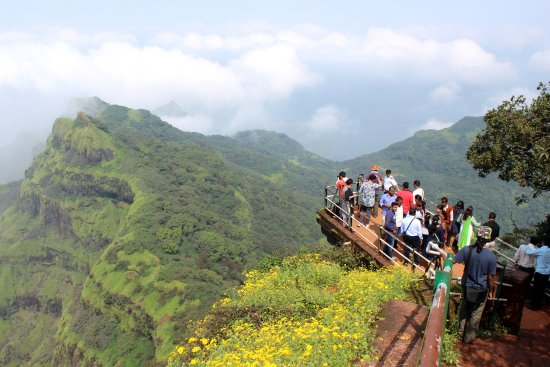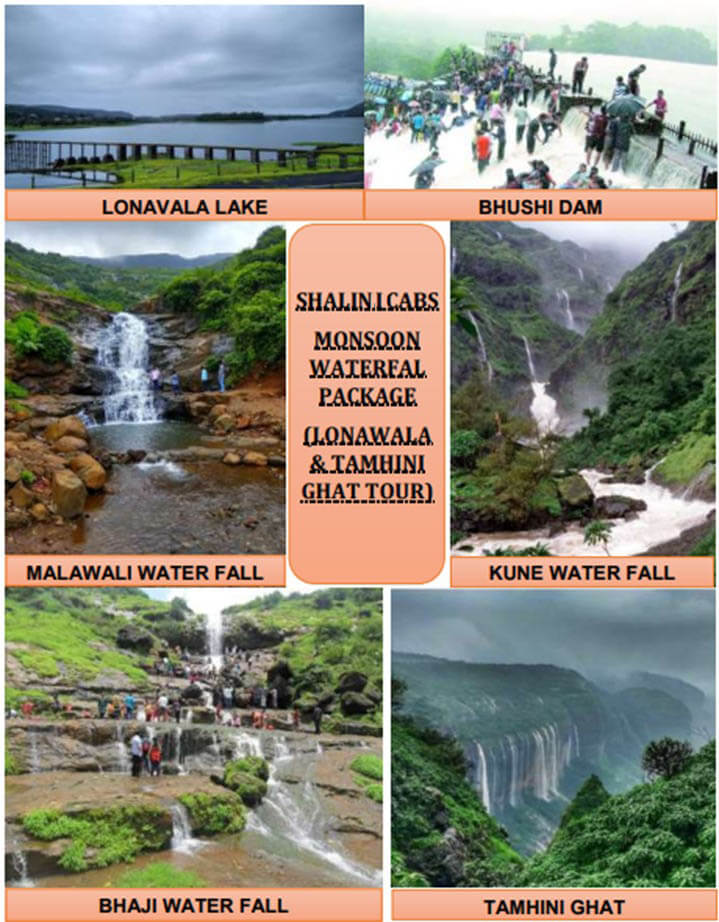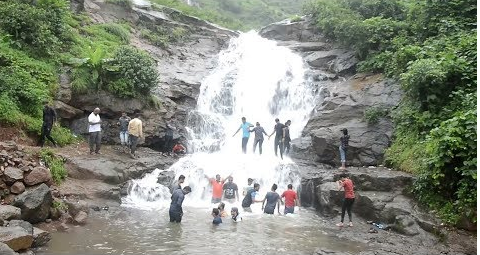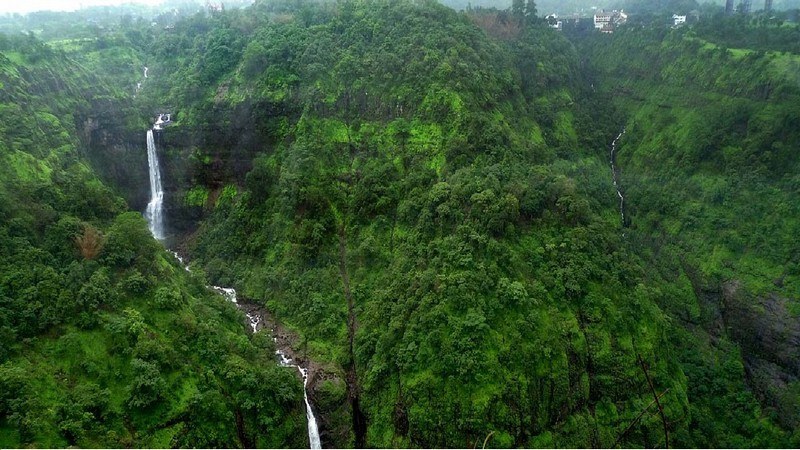Mahabaleshwar 2 Days Package


We are the best in the city for providing the PANCHGANI, MAHABALESHWAR PACKAGE taxi service. The best option for traveling for PANCHGANI, AHABLESHWAR PACKAGE is to book a cab that can be done with ease with our online booking mobile Shalini Cab App.
Instruction: Booking by mobile Apps
The pickup location will be Mumbai cities 50km and Enter drop Location same pickup address to get the package in Mobile App.
Select in Mobile App: Mabaleshwar Tour 2 (D)
Now you do not need to do the stressful journey by bus when you can travel in the comfort of the AC car by hiring a taxi for PANCHGANI, MAHABALESHWAR PACKAGE. We can help you avoid all the hassles of traveling on public transport. Choose us for PANCHGANI, MAHABALESHWAR PACKAGE taxi services as it is the best option one can get in Mumbai city. With excellent services, you can also now book your cabs in Mumbai for Airport Taxi, City Taxi, Rental Taxi, Outstation, and Oneway trips. We have a wide range of taxis for travel to Mumbai City. You need to spare a minimum of 2 days to visit PANCHGANI, MAHABALESHWAR PACKAGE all the places. Just by paying a nominal booking amount, you can book your AC car.
PANCHGANI, MAHABALESHWAR PACKAGE Details
Mahabaleshwar /Panchgani is a popular tourist place in India and a town in Satara district of Maharashtra. It lies at an altitude of 1,353 m in the Western Ghats range of India. It is one of the best places to visit near Pune & Mumbai and among the top places to visit in Maharashtra.
This pretty hill station is often referred to as the queen of hill stations in Maharashtra. It offers a panoramic view of the plains with the imposing sloppy peaks and surrounding woods. Mahabaleshwar constitutes three villages – Malcolm Peth, Old Mahabaleshwar, and some part of the Shindola village. Arthur’s Seat, Lingmala Waterfall, and Pratapgad Fort are among the must include places in your Mahabaleshwar tour packages.
Present-day Mahabaleshwar has come into existence in the year 1829-30 when it became the summer capital of Bombay presidency during the British Raj. Earlier, it was known as Malcolm Peth and the first historical mention of Mahabaleshwar dates back to 1215 CE when the King Singhan of Devgiri visited Old Mahabaleshwar. He built a small temple and water tank at the source of the river Krishna. In the 16th century, the Maratha family of Chandarao ruled over the city. Later, in the 17th century, Jaoli and Mahabaleshwar were taken over by Shivaji Maharaj, who constructed the Pratapgarh Fort in 1656 CE. The city also witnessed the imprints of the British, who included the destination in the territory of the Raja of Satara in 1819.
Mahabaleshwar is the source of the Krishna River that flows across Maharashtra, Karnataka, Telangana, and Andhra Pradesh. The legendary source of the river is a spout from the mouth of a statue of a cow in Panch Ganga Temple in Old Mahabaleshwar. Four other rivers also flow from here, before they merge into the Krishna; these are Koyana, Venna (Veni), Savitri, and Gayatri.
Mahabaleshwar attracts hordes of tourists for its lovely views, beautiful landscapes, and pleasant temperatures. There are many tourist attractions in Mahabaleshwar like forts, temples, lakes, and many more. Pratapgarh Fort, Venna Lake, Mahabaleshwar Temple, Krishnabai Temple, Lingamala Falls, Tapola, Panchgani are some important tourist spots in Mahabaleshwar. Several viewpoints are strategically located to capture the panoramic views created by the majestic Sahyadri Mountains and deep valleys. Arthur’s Seat, Wilson Point, Kate’s Point, Elephant head Point, Connaught Peak, and Bombay Point are popular viewpoints. Mahabaleshwar is famous for the cultivation of strawberries and mulberries.
Pune International Airport is the nearest airport, which is about 132 km from Mahabaleshwar and has daily flights from Mumbai, Bangalore, Hyderabad, Chennai, Kochi, Delhi, Kolkata, and Goa. Satara is the nearest railhead, which is about 60 km from Mahabaleshwar. It has trains from Goa, Delhi, Mumbai, Pune, Hubli, Kochi, Kolhapur, Tirunelveli, Mysore, Pondicherry, Bangalore, Ahmedabad, Gorakhpur, Ajmer, and Jodhpur. Mahabaleshwar is well connected by road with Mumbai, Pune, Satara, Bangalore, Goa, and Shirdi.
Mahabaleshwar has a moderate climate throughout the year and can be visited at any time of the year. However, the best time would be from June to October.
[etabs slug=”Mahabaleshwar-tour-packages”]
Route: please click this link: https://goo.gl/maps/Stw6By9XpVk6iyzs7 ( Airport to Mahabaleshwar ).
From Mumbai Airport, 275 km is Mahabaleshwar travel time approximately 6 hrs 30 minutes best time to start journey morning 4.00 am to avoid traffic first-day visit Mahabaleshwar point
1st Day
Mahabaleshwar
A Hilltown in the Western Ghats, apart from its strawberries, Mahabaleshwar is also well known for its numerous rivers, magnificent cascades, and majestic peaks.
Mahabaleshwar is a hill station located in the Western Ghats, in the Satara district of Maharashtra. Known for its captivating beauty and the beautiful strawberry farms, the city comprises of ancient temples, boarding schools, manicured and lush green dense forest, waterfalls, hills, valleys. The city is definitely among the most sought after weekend getaways from Mumbai. Charming views, enticing valleys, serene lakes, and a refreshing delight for your taste buds – the best way to summarize the gift of this nature.
Visiting popular points in Mahabaleshwar
Route: please click this Link https://goo.gl/maps/LDShfxXKZj8e8jee7
( APPROXIMATELY 60 KM)
- Elephant’s Head Point & Kate’s Point
- Krishnabai Temple / Krishna Devi Temple
- Mahabaleshwar Mandir
- Panch Ganga / Panchganga Temple
- Elphinstone Point
- Arthur Seat Point
- Vienna Dam / Lake
- Bombay Point / Sunset Point
2nd Day
Panchgani
Deriving its name from the five hills surrounding it, Panchgani is a popular hill station near Mahabaleshwar, famous for its various sunset/sunrise points and scenic valley view.
Located at an altitude of 1, 334 m., Panchgani is a hill station in Maharashtra, known for its scenic views. Five hills from the Sahyadri mountain ranges offer Panchgani its name. The picturesque backdrop of hills on one side and coastal plains on the other makes for an amazing view. In the British era, the place was treated as a summer resort and hence many colonial period establishments can be seen here. Mahabaleshwar is like a twin city to Panchgani.
Visiting popular points in Panchgani
Route: please click this Link: https://goo.gl/maps/bvcweiAf7EWNHW2g9
- Wilson Point / Sunrise Point
- Mapro Garden
- Parsi Point
- Sydney Point
- Devil’s Kitchen
- Table Land
2nd days Panchgani point start return journey from Panchgani 2.30 pm you have to Reach Mumbai before 11.30 pm .
Toll : Mumbai Return Toll Rs80, Express way Toll Return Rs540, Khed shivpur Toll Return Rs 200,
Total : Rs 820/- Return
panchgani Entry Fee : Rs 250/- Parking Extra
mahableshwar Entry Fee Rs 250/- Parking Extra
To See Video click the Link Below👇 video Mahableshwar 2 Days Trip
 Table Land is a plateau that marks the highest point of the entire region of Panchgani with a height of 4500 feet above sea level. But that’s not it – spanning over an area of a whopping 95 acres, the Table Land ranks second on the list of the largest plateaus in Asia! The base rock of this plateau is majestic laterite entirely covered with dense foliage of miniature bluebonnet grass. The dizzying height of Table Land offers a jaw-dropping view of deep valleys and majestic hills. You can also enjoy a panoramic and unobstructed view of the sunrise and sunset from here and witness the skies burst into a myriad of colors.
Table Land is a plateau that marks the highest point of the entire region of Panchgani with a height of 4500 feet above sea level. But that’s not it – spanning over an area of a whopping 95 acres, the Table Land ranks second on the list of the largest plateaus in Asia! The base rock of this plateau is majestic laterite entirely covered with dense foliage of miniature bluebonnet grass. The dizzying height of Table Land offers a jaw-dropping view of deep valleys and majestic hills. You can also enjoy a panoramic and unobstructed view of the sunrise and sunset from here and witness the skies burst into a myriad of colors.
If you are looking for a fun-filled and action-packed getaway, Table Land is just where you want to be. From horse riding to trekking, from merry go rounds to arcade games, from mini trains to mini food kiosks, this plateau screams enjoyment galore and promises a getaway filled with energy and excitement! Best described as a beautiful marvel of nature, this plateau is a very popular attraction of the Mahableshwar-Panchgani region and attracts the attention of many tourists all year long. A treasure trove of unparalleled scenic beauty and a bubbling center of fun activities, Table Land is the perfect destination to go to when you need to unwind after a long week.
 At a distance of 2 km from Panchgani Bus Stand, Devil’s Kitchen is situated to the south of Table Land in Panchgani hill station.
At a distance of 2 km from Panchgani Bus Stand, Devil’s Kitchen is situated to the south of Table Land in Panchgani hill station.
According to mythology, this is the place where Pandavas of Mahabharata stayed here for a while during their exile. This place was used to cook their food. Some people claim that Pandvgadh Caves are also built by them and bear their name. The place is now a beautiful sightseeing spot which is popular among tourists.
The place is situated near Table Land and the visitor can either take a short walk or hire a private taxi for sightseeing.
 Sydney Point
Sydney Point- At a distance of 2 km from Panchgani Bus Stand, Sydney Point is one of the famous viewpoints in Panchgani hill station in Satara district of Maharashtra.Sydney Point is situated on a hill that faces Krishna Valley. It was named after Sir Sidney Beckwarth, Commander in Chief, who succeeded Sir John Malcolm as Bombay’s Governor in 1830. Sydney Point is famous for providing charming views of the Krishna Valley, Dhom Dam, Kamalgad Fort, and the city of Wai. The hillock also offers beautiful views of the hill ranges of Pandavgad and Mandhardeo.
 Situated on the way to Mahabaleshwar, the picturesque Parsi Point overlooks the Krishna Valley and the sparkling waters of the Dhom Dam. It is surrounded by lush green mountains and provides some spectacular views. If you’re looking for a place to stop for a while and just breathe, this is it. The best part about it is the soul-soothing breeze that refreshes any tired traveler’s senses.
Situated on the way to Mahabaleshwar, the picturesque Parsi Point overlooks the Krishna Valley and the sparkling waters of the Dhom Dam. It is surrounded by lush green mountains and provides some spectacular views. If you’re looking for a place to stop for a while and just breathe, this is it. The best part about it is the soul-soothing breeze that refreshes any tired traveler’s senses.
The Parsi Point gets its name from its significance to the Parsi community in the past. Best suited for visits during sunset/sunrise, it provides an excellent setup for the perfect landscape photograph. There are various refreshment stalls in and around the place offering delicious snacks.
One can also avail of the service of a telescope vendor for different angled views of the area. Camel rides are a fun feature. Skydiving and other adventure sports used to be too, until it was shut down due to some accidents. However, kids will have a fun time here thanks to the ample play area.
 At a distance of 11 km from Mahabaleshwar and 7 km from Panchgani, Mapro Garden is a garden situated at Gureghar on Mahabaleshwar-Panchgani road in Satara district of Maharashtra. A trip to Mapro Garden is one of the top things to do in Mahabaleshwar.
At a distance of 11 km from Mahabaleshwar and 7 km from Panchgani, Mapro Garden is a garden situated at Gureghar on Mahabaleshwar-Panchgani road in Satara district of Maharashtra. A trip to Mapro Garden is one of the top things to do in Mahabaleshwar.
Mapro Garden is a very popular tourist spot in Mahabaleshwar and is known for its strawberry produce. The name Mapro is a short form of Mahabaleshwar Products. Mapro was founded in 1959 by Mr. Kishore Vora and it is very popular in Maharashtra state for its processed fruit products like fruit crushes, squash, etc. Mapro has also diversified into products like chocolates, honey, gulkand, and many more.
The major highlight of Mapro Garden is the chocolate factory within the premises. Visitors can also see a small nursery full of beautiful flowers and plants. Various counters are selling different Mapro products. Tourists can buy a variety of Mapro products like syrups, sauces, jelly, chocolates, mocktail mixtures, and much more.
Mapro also hosts the famous Strawberry Festival in March/April during the Easter weekend. Over 250 farmers from nearby villages participate in the four-day festival, opening their farms to tourists. Mapro garden offers free strawberries to the tourists during this festival. The Festival showcases raw strawberries and innovative strawberry-based products such as strawberry pizza, strawberry bhel, chocolate-dipped strawberries, and strawberry sandwiches among others. The festival also includes traditional folk performances of Dhol and Lezim for which dancers are invited from Pratapgarh.
Timings: 8 AM to 8 PM
 At a distance of 2 km from Mahabaleshwar Bus Stand, Wilson Point is the highest point in Mahabaleshwar. Situated at an altitude of 1439 m, Wilson Point is also known as Sunrise Point and one can experience the beautiful sunrise from this point.
At a distance of 2 km from Mahabaleshwar Bus Stand, Wilson Point is the highest point in Mahabaleshwar. Situated at an altitude of 1439 m, Wilson Point is also known as Sunrise Point and one can experience the beautiful sunrise from this point.
The original name of the point is Sindola Hill. This point is named after Sir Leslie Wilson, the Governor of Bombay province from 1923 to 1926. Wilson Point is a vast plateau with three watching towers, each at a different spot. These towers provide a mesmerizing vista of Mahabaleshwar and the surrounding area. However, Wilson’s point is the only point in Mahabaleshwar where both sunrise and sunset can be seen.
Timings: 6 AM to 6 PM
 At a distance of 3 km from Mahabaleshwar Bus Stand, Sunset Point is one of the most popular viewpoints of Mahabaleshwar and is popularly known as Mumbai Point or Bombay Point. This is the place from where people can view the magnificent sunset over the valleys below at Mahabaleshwar.
At a distance of 3 km from Mahabaleshwar Bus Stand, Sunset Point is one of the most popular viewpoints of Mahabaleshwar and is popularly known as Mumbai Point or Bombay Point. This is the place from where people can view the magnificent sunset over the valleys below at Mahabaleshwar.
The Bombay Point is the oldest point of Mahabaleshwar and the point is named so owing to its location on the old Bombay road. The place has a large open space with a bandstand. It is an ideal place for a late afternoon picnic. Sunset Point is the most crowded point because one cannot view anything at other viewpoints at that time of the day. Many activities like Horse riding, Choupati games are popular with the tourists at this point. There is a lover’s point to the left of the Mumbai point.
Timings: 6 AM – 6 PM
 Venna lake is one of the major attractions of Mahabaleshwar. The lake is self-constructed with trees and greenery all around. Huge lake with boating option. There are many other activities to do. It is crowded with people but during summers the water level goes down which makes it not so pleasant view. A boat ride, horse ride, merry rides & chill place to eat & relax.
Venna lake is one of the major attractions of Mahabaleshwar. The lake is self-constructed with trees and greenery all around. Huge lake with boating option. There are many other activities to do. It is crowded with people but during summers the water level goes down which makes it not so pleasant view. A boat ride, horse ride, merry rides & chill place to eat & relax.
This is THE place to go boating- boat rates vary by sizes, capacity, and timorously 250 to 750 INR per hour approx. ). You can take a boat by yourself or have an oarsman take you around the lake for a serene, peaceful (might remind you of the Dal lake ride in Kashmir) tour. Once you get this done, you can opt for a single lap of a horse ride or just a few meters away take a ride on Ferris wheels, go-karts, etc. Lined on the opposite side of the lake are plenty of food stalls (what would we do without them off erring the quintessential Chai, Maggi, bhajiya, ice-cream, and the likes of bhutta, vada pav missal, etc. On weekends you must be aware of the traffic and the related crowd (reminds you of dombivili station at 8:20 in the morning)A free to walk place with a sidewalk for visitors just wanting to spend time staring at the lake and enjoying some peace.
 At a distance of 13 km from Mahabaleshwar Bus Stand and 7 km from Old Mahabaleshwar, Arthur Seat Point is the most popular viewpoint in Mahabaleshwar and among the top places to visit in Mahabaleshwar.Arthur Seat Point is located at a height of 1340 m and is surrounded by the deep Savitri gorge on one side and a lush green plateau on the other side. Popularly called Queen of the Points, Arthur Seat Point has been named after Sir Arthur Mallet who was the first man to build a house at this point. Arthur Seat is the only point that clearly shows the geological contrast between the Konkan and the Deccan territories.
At a distance of 13 km from Mahabaleshwar Bus Stand and 7 km from Old Mahabaleshwar, Arthur Seat Point is the most popular viewpoint in Mahabaleshwar and among the top places to visit in Mahabaleshwar.Arthur Seat Point is located at a height of 1340 m and is surrounded by the deep Savitri gorge on one side and a lush green plateau on the other side. Popularly called Queen of the Points, Arthur Seat Point has been named after Sir Arthur Mallet who was the first man to build a house at this point. Arthur Seat is the only point that clearly shows the geological contrast between the Konkan and the Deccan territories.
Arthur Seat Point area has 6 points in total, Arthur’s Seat Point, Echo Point, Hunter Point, Tiger Spring Point, Window Point, and Malcom Point. The barren deep Savitri valley on the left and lush green Jor valley on the right extends a mesmerizing view to the seat. Moving step by step deep down, one finds the window point right below the seat and the Tiger Spring which is the source of the Savitri River. Window Point is the first point, situated below the Arthur Seat.
From Arthur Seat Point one can get a mesmerizing view of the Mahabaleshwar Range including Pratapgad, Koleshwar, Raireshwar, and Chandragad. It is one of the most popular viewpoints for its dramatic grand canyon like views. Arthur Seat is famous for floating light objects. If one can throw light things like a cold drink cap in the valley, it comes up again due to air pressure.
From the parking, visitors need to do 30 min walk to reach the viewpoint. The trek is an easy one with stone steps for most of the way. There are a lot of vendors throughout the route.
Timings: 6 AM – 6 PM
 At a distance of 10 km from the Mahabaleshwar Bus Stand and 5 km from Old Mahabaleshwar, Elphinstone Point is one of the famous viewpoints situated atop a hill near Arthur Seat Point in Mahabaleshwar.
At a distance of 10 km from the Mahabaleshwar Bus Stand and 5 km from Old Mahabaleshwar, Elphinstone Point is one of the famous viewpoints situated atop a hill near Arthur Seat Point in Mahabaleshwar.
Elphinstone Point was discovered in 1830 by Dr. Murray and has an old mansion in its vicinity. The viewpoint got its name from Mount Stuart Elphinstone, the then Governor of Bombay Presidency. The mansion now lies in ruins and local authorities are planning to demolish it to erect a picnic shed in its place for tourists.
Elphinstone Point is one of the highest points in Mahabaleshwar overlooking the two valleys, with rivers Koyna on the left and Savitri on the right. The lofty cliff commands a panoramic view of the Pratapgarh Fort, Koyna Valley, and nearby plains. One can also admire the ravine, which lies between Elphinstone Point and Arthur Seat Point.
Timings: 6 AM – 6 PM
 Panch Ganga / Panchganga Temple
Panch Ganga / Panchganga Temple
The birthplace of five river Panchganga temple in old Mahabaleshwar is said to be 4500 years old. This old Mahabaleshwar temple of five rivers (Krishna, Venna, Koyna, Gayatri, and Savitri) is at a very beautiful location. It is away from all hip and noise of the hill station. These all rivers originate from here and flow in various directions. The main temple is of Lord Shiva and I felt very calm there. There are a few other temples also on the pedestal route to the main temple. Pl, note that this location is a little away approx 5-6 km from the main city and there are buses also available from bus / ST stand for here. If possible try to see Krishna temple nearby.
 At a distance of 6 km from Mahabaleshwar Bus Stand, Mahabaleshwar Temple is an ancient Hindu temple situated in the Old Mahabaleshwar in the Satara district of Maharashtra. It is one of the popular Mahabaleshwar tourist places.
At a distance of 6 km from Mahabaleshwar Bus Stand, Mahabaleshwar Temple is an ancient Hindu temple situated in the Old Mahabaleshwar in the Satara district of Maharashtra. It is one of the popular Mahabaleshwar tourist places.
Mahabaleshwar Temple is dedicated to Lord Shiva and is one of the important pilgrimage sites for Hindus. The temple was built by Chandarao More in the 16th century and is a model of the Hemadant architectural style of South India. The Mahabaleshwar hills have been named after Lord Mahabali, whose name stands as a symbol of strength.
The temple is enclosed by a 5 feet wall and is divided into two areas, the inner room, and the outer room. The sanctum sanctorum has Shiva linga made of black stone, which is 500 years old swayambhu lingam. This self-originated lingam is in the shape of Rudraksha and is called Mahalingam.
The Trishul of Lord Shiva along with his Damru, Rudraksha, and one bed have been preserved in this temple and these are around 300 years old. Legend has it that the bed used to be crumpled in the morning, indicating Shiva’s presence during the night at the temple. The temple also houses a square-shaped raised platform. According to the legend, the Maratha ruler, Shivaji weighed his mother Jijabai in gold at this platform and then gave away the gold in charity. Atibaleshwar temple is another old temple located next to the Mahabaleshwar Temple.
Timings: 6 AM – 8 PM
At a distance of 300 m from Mahabaleshwar Temple and 6 km from Mahabaleshwar Bus Stand, Krishnabai Temple is an old temple situated few meters away from Panch Ganga Temple in Old Mahabaleshwar. It is among the famous Mahabaleshwar tourist places.
Krishnabai Temple is supposed to be a source of the Krishna River. The temple was built in 1888 by a ruler of Ratnagiri on a hilltop overlooking the Krishna valley. The temple has a Shiva lingam and a beautiful statue of Goddess Krishna. A small stream of the river flowing from a cow-face (gomukh) falls in a Kund or water tank which is the source of might River Krishna. Stone carved columns and ceilings are the special characteristics of this temple.
The temple also offers enchanting views of the Krishna valley and surrounding countryside. Behind Panch Ganga temple, there is a small and well-marked trail that leads to Krishnabai temple. It is not visited much by tourists and is isolated but it provides a most exquisite view of the river Krishna.
Timings: 6 AM – 8 PM
 3 km from city center
3 km from city center
Mahabaleshwar Elephant’s Point is famous for the beauty and peace that one gets by being there. The greenery around is worth appreciating, and nature around is stunning and gives one a sense of comfort away from the fast-moving life of the city. The rock formations at the site are present in a way that forms the trunk of an elephant. It is one of the most visited and famous attractions of Mahabaleshwar which is flocked in by tourists from near and far.
Elephant’s Point got its name from the age prevalent during the British Raj and the Governor of Bombay at the time, Sir Mount Elphinstone. It is believed that it was founded in the year 1930 by Dr. Murray who also has an old mansion present nearby.
Today, only the ruins of this hotel are present in the place of which a picnic shed for the tourists is being constructed by the local authorities. The elephant’s point justifies its name and gives one a picture of an elephant’s head and trunk. One must surely not miss out on the place.





 1 km
1 km 3 km
3 km
